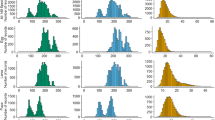Abstract
Larvae of the mothCochylis atricapitana (Stephens) are monophagous leaf, crown, stem or bud borers of ragwort,Senecio jacobaea L. (Asteraceae). In the present investigation, aspects of the life cycle ofC. atricapitana were determined. Moths ofC. atricapitana lay an average of 158 eggs/female with as many as 355 eggs being laid by a single female. The majority of eggs are laid individually along the primary and secondary veins on the underside of ragwort leaves. Egg incubation ranges from 4.2 days at 30°C to 14.4 days at 15°C. At a constant 23°C under a 16 hour photoperiod,C. atricapitana takes approximately 40 days to complete a generation. Caterpillars make their way to young, actively growing ragwort shoots or buds, and begin mining into the plant tissue, boring into the leaf, crown, stem or bud.C. atricapitana has five larval instars and enters diapause as a final instar larva. In southern Victoria, moths ofC. atricapitana fly from late September through to the beginning of February. Adults emerge after overwintering towards the end of spring or beginning of summer.C. atricapitana has established at two sites while larvae, or signs of damage have been observed at approximately 52% of release sites.
Résumé
Les larves du lépidoptère nocturneCochylis atricapitana (Stephens) sont monophages sur le séneçonSenecio jacobaea L. (Asteraceae). Certains aspects du cycle biologique deC. atricapitana ont été étudiés. Les femelles pondent une moyenne de 158 œufs avec un maximum de 355. La majorité des œufs sont pondus individuellement, à côté des nervures primaires et secondaires, à la face inférieure des feuilles. La période d'incubation est de 4,2 jours à 30°C et de 14,4 jours à 15°C. Il faut 40 jours pour obtenir une génération, avec une température de 23°C et une photopériode de 16 heures. Les jeunes chenilles creusent des galeries dans les feuilles, couronnes, tiges et bourgeons de la plante. Il y a cinq stades larvaires et les chenilles entrent en diapause au dernier stade. Dans le sud du Victoria, les adultes sont actifs de la fin septembre au début de février.C. atricapitana s'est installé sur deux sites et les dégâts sur séneçon ont été observés dans 52% des sites où les lépidoptères ont été lâchés.
Similar content being viewed by others
References
Bornemissza, G. F. — 1966. An attempt to control ragwort in Australia with the cinnabar moth;Callimorpha jacobaeae (L.) (Arctiidae: Lepidoptera). —Aust. J. Zool., 14, 201–243.
Dyar, H. G. — 1890. The number of molts in Lepidopterous larvae. —Psyche 5, 420–422.
Field, R. P., McLaren, D. A. &Jackson, K. W. — 1988. Biological control of ragwort: Mass rearing, release and establishment ofLongitarsus flavicornis, L. jacobaeae andCochylis atricapitana. —Proc. 5th Australasian Conference on Grassland Invertebrate Ecology. Melbourne University, Victoria, 15–19 Aug. D. & D. Printing, Victoria. p. 96–101.
Forsyth, A. A. — 1954. British poisonous plants. —London, UK;HMSO, 48 p.
Lane, D., Riches, K &Combellack, H. — 1980. A survey of distribution of the noxious weeds in Victoria.Unpublished report.Department of Conservation and Environment, Keith Turnbull Research Institute, Victoria.
Mortimer, P. H. & White, E. P. — 1975. Toxicity of some Compositae (Senecio) weeds.Proceedings of the 29th New Zealand Weed and Pest Control Conference. p. 88–91.
Parsons, W. — 1973. Noxious weeds of Victoria. —Inkata Press, Melbourne p. 110–115.
SAS Institute — 1985. Users Guide Statistics, Version 5 —SAS Institute Inc., Cary, NC, USA.
Stephens — 1852. List of Lepidoptera in British Museum, Part X, p. 103.
Schmidl, L. — 1972. Biology and control of ragwort,Senecio jacobaea L., in Victoria, Australia. —Weed. Res. 12, 37–45.
Author information
Authors and Affiliations
Rights and permissions
About this article
Cite this article
McLaren, D.A. Observations on the life cycle and establishment ofCochylis atricapitana (Lep: Cochylidae), a moth used for biological control ofSenecio jacobaea in Australia. Entomophaga 37, 641–648 (1992). https://doi.org/10.1007/BF02372335
Received:
Accepted:
Issue Date:
DOI: https://doi.org/10.1007/BF02372335




